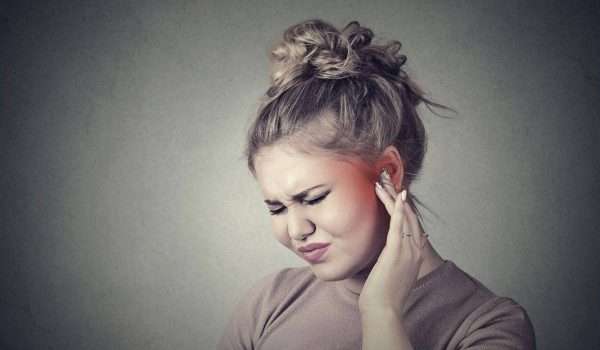 التهاب الأذن الوسطى مشكلة مزعجة ومؤلمة، ويمكن أن تؤثر على النشاطات اليومية العاديه، وفي الغالب عند الشعور بألم في الأذن يتم تجربة بعض العلاجات المنزلية والأعشاب التي كثيرًا ما تكون فعّالة في تخفيف الألم والمساهمة في علاج المشكلة، تابع المقال التالي لمعرفة كيفية علاج التهاب الاذن الوسطى بالاعشاب المختلفة.
التهاب الأذن الوسطى مشكلة مزعجة ومؤلمة، ويمكن أن تؤثر على النشاطات اليومية العاديه، وفي الغالب عند الشعور بألم في الأذن يتم تجربة بعض العلاجات المنزلية والأعشاب التي كثيرًا ما تكون فعّالة في تخفيف الألم والمساهمة في علاج المشكلة، تابع المقال التالي لمعرفة كيفية علاج التهاب الاذن الوسطى بالاعشاب المختلفة.
ما هو التهاب الأذن الوسطى ؟
التهاب الأذن الوسطى هو التهاب في الأذن الوسطى أو المنطقة الموجودة داخل طبلة الأذن، ويبدأ هذا الالتهاب عادة بالعدوى التي تسبب التهاب الحلق، أو نزلات البرد أو المشاكل التنفسية الأخرى، وينتشر إلى الأذن الوسطى، ويمكن أن تسبب العدوى فيروسات أو بكتيريا، ويمكن أن تكون حادة أو مزمنة، ويمكن أن تصاب كلا الأذنين في نفس الوقت، ويمكن أن يكون الالتهاب حاد أو مزمن.
علاج التهاب الاذن الوسطى بالاعشاب
استخدمت الأعشاب وزيوتها الأساسية لعلاج عدوى الأذن منذ آلاف السنين، حيث أن هذه المواد القوية لها خصائص مطهرة، ومضادة للفيروسات، ومضاد للالتهابات، ومسكنة، لذا تكون فعّالة في علاج التهاب الاذن الوسطى، ومنها:
أعشاب مختلفة لعلاج التهاب الأذن
الثوم
الثوم هو علاج مضاد للبكتيريا يستخدم بشكل شائع في علاج عدوى الأذن، ويمكن صنع زيت الثوم في المنزل عن طريق نقع قطعة من الثوم في زيت الزيتون أو يمكن شراؤه من المتاجر، ولكن مع ضرورة استشارة الطبيب.
القنفذية وعشب خاتم الذهب
القنفذية Echinacea، وخاتم الذهب goldenseal هما أعشاب شعبية تهدف إلى تطهير النظم الداخلية للجسم ومنع التهابات الأذن، ويمكن خلطها مع الماء المغلي وشرب الخليط ببطء.
زيت الأوريجانو
يعد زيت الأوريجانو علاج ممتاز لالتهابات الأذن بسبب خصائصه المضادة للبكتيريا، والمضادة للفيروسات، كما يمكنه تعزيز نظام المناعة وأيضا تخفيف الالتهاب في المسالك التنفسية وقناة الأذن، ولكن لا تضع هذا الزيت مباشرة في قناة الأذن، قم بتخفيفه أولاً ببضع قطرات من الزيت الحامل مثل زيت جوز الهند، ثم ضعه موضعياً على الأذن الخارجية، ولكن بعد استشارة الطبيب.
زيت الروزماري
يعد زيت إكليل الجبل أحد أكثر الزيوت الأساسية إستخدامًا في علاج عدوى الأذن، حيث يمكن أن يقضي بسرعة أي عدوى بكتيرية قد تسبب ألم في الأذن الوسطى، ويمكنه أن يساعد أيضًا على تلطيف العدوى الأولية بالجيوب الأنفية، وغالباً ما يخلط زيت الروز ماري مع زيت اللافندر أو الكافور، ويتم تطبيقه على الحلق والرقبة، بالإضافة إلى أعلى وتحت الأذنين، حيث يتم امتصاص هذا الزيت بسرعة ويبدأ في تخفيف الالتهاب في تلك المناطق.
زيت شجرة الشاي
زيت شجرة الشاي واحد من أكثر الزيوت المضادة للبكتيريا، والفيروسات، والفطريات في السوق، مما يجعله فعّال للغاية لعلاج التهابات الأذن، فمنذ آلاف السنين، تم استخدام هذا الزيت لعلاج الالتهابات بجميع أنواعها، بما في ذلك الأذن الداخلية.
لا يوصى أبدًا باستخدام زيت شجرة الشاي داخليًا، حيث أنه يمكن أن يكون سامًا، كما يؤدي أيضًا إلى التهاب قناة الأذن، ويمكن تخفيف بعض زيت شجرة الشاي في زيت الزيتون ثم وضعه في كرة قطنية وتطبيقها على الأذن الخارجية مع الاحتفاظ بها فوق قناة الأذن.
وفي النهاية وبعد معرفتك كيفية علاج التهاب الاذن الوسطى بالاعشاب المختلفة، إذا كان لديك المزيد من التساؤلات أو الاستفسارات، يمكنك استشارة أحد أطبائنا من هنا.
